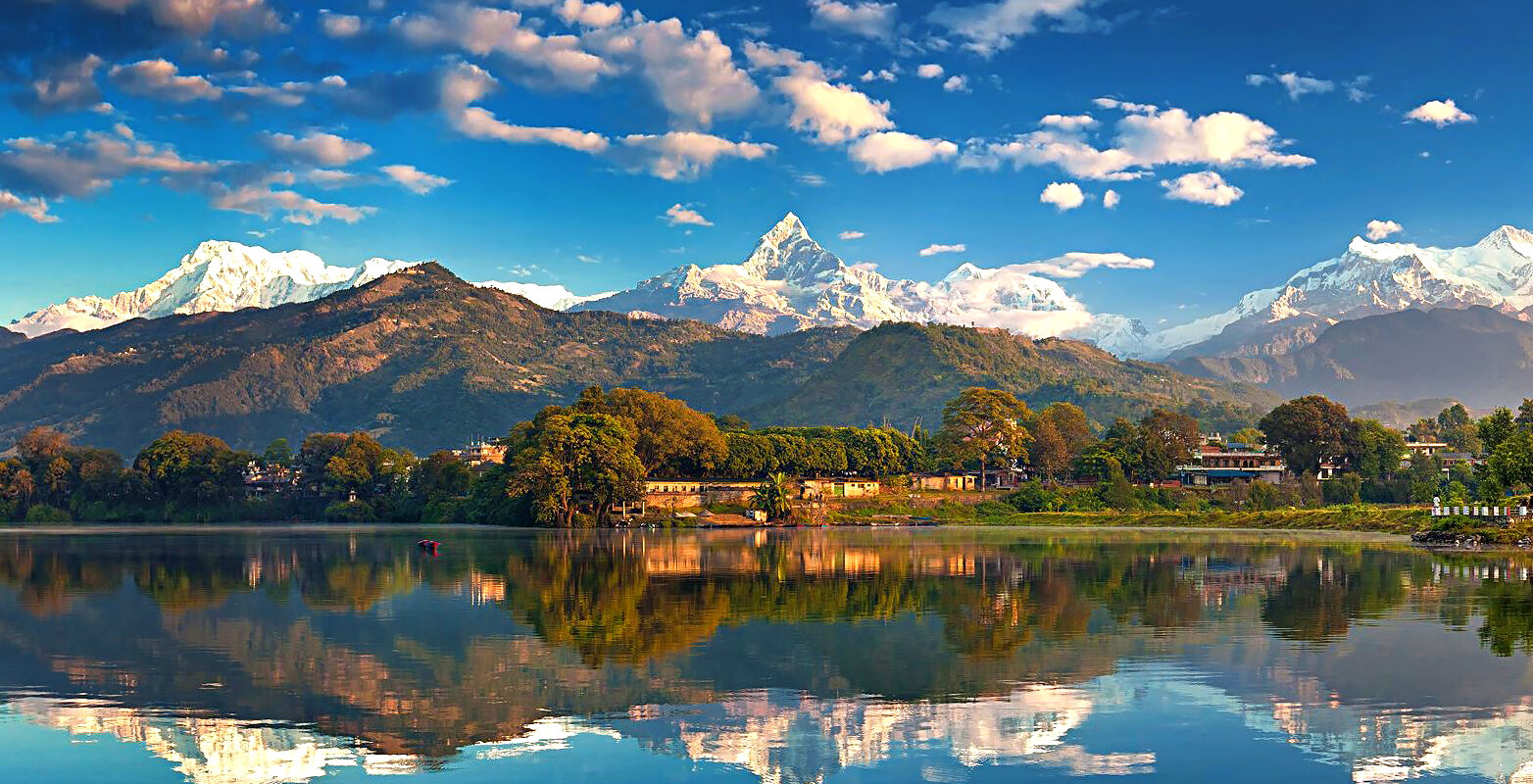
Pokhara
Pokhara (Nepali: पोखरा, Nepali pronunciation: [ˈpokʰʌɾa]) is a metropolitan city in Nepal, which serves as the capital of Gandaki Province. It is the second most populous city of Nepal after Kathmandu, with 518,452 inhabitants living in 101,669 households in 2021. It is the country’s largest metropolitan city in terms of area. The city also serves as the headquarters of Kaski District. Pokhara is located 200 kilometres (120 miles) west of the capital, Kathmandu. The city is on the shore of Phewa Lake, and sits at an elevation of approximately 822m. The Annapurna Range, with three out of the ten highest peaks in the world—Dhaulagiri, Annapurna I and Manaslu—is within 15–35 mi (24–56 km) of the valley.
Pokhara has become a major tourist destination: it is considered the tourism capital of Nepal, mainly for adventure tourism and the base for the famous Annapurna Circuit trek. Tourism is the primary source of income for local people and the city.
The city promotes two major hilltops as viewpoints to see the city and surrounding panorama: World Peace Pagoda, built-in 1996 A.D. across the southern shore of Phewa Lake and Sarangkot, which is northwest of the city. In February 2004, International Mountain Museum (IMM) was opened for public in Ratopahiro to boost the city’s tourism. Other museums are Pokhara Regional Museum; an ethnographic museum; Annapurna Natural History Museum which houses preserved specimens of flora and fauna, and contains a particularly extensive collection of the butterflies, found in the Western and Annapurna Conservation Area region of Nepal; and Gurkha Museum featuring the history of the Gurkha soldiers.